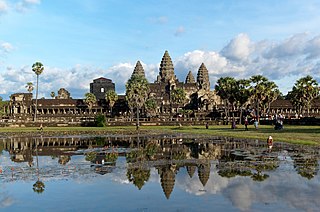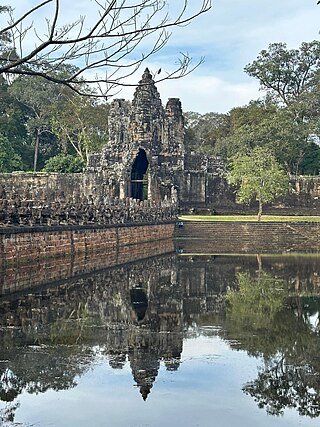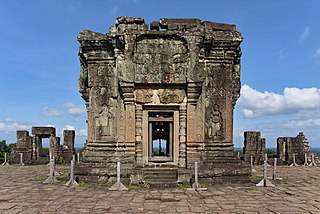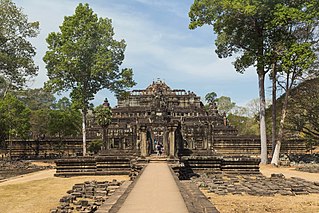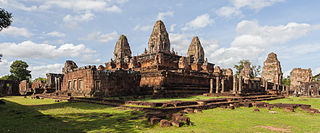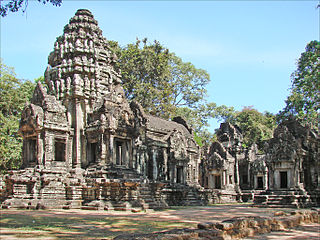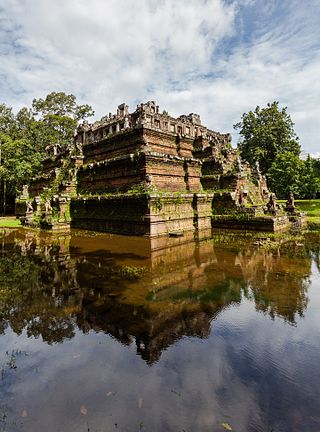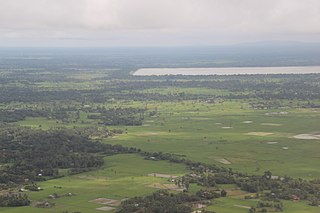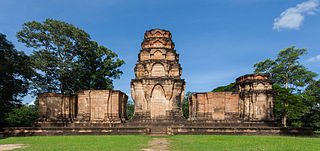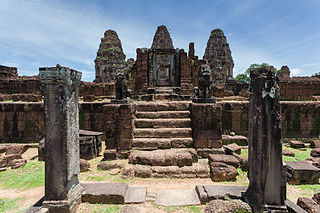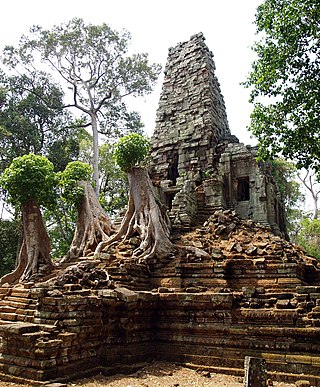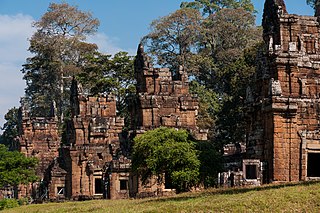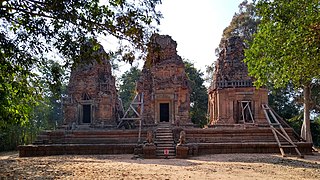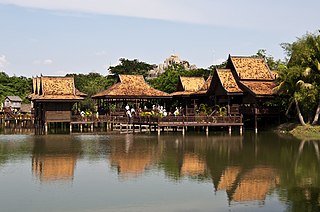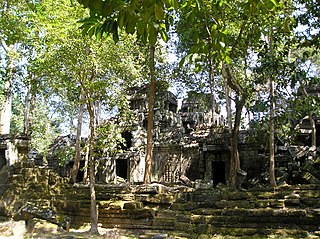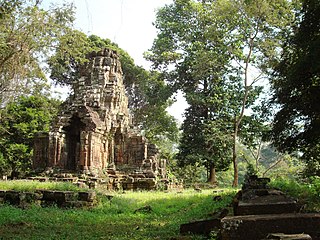20 Sights in Siem Reap, Cambodia (with Map and Images)
Legend
Premium Sights
Book tickets, guided tours and activities in Siem Reap.
Guided Free Walking Tours
Book free guided walking tours in Siem Reap.
Welcome to your journey through the most beautiful sights in Siem Reap, Cambodia! Whether you want to discover the city's historical treasures or experience its modern highlights, you'll find everything your heart desires here. Be inspired by our selection and plan your unforgettable adventure in Siem Reap. Dive into the diversity of this fascinating city and discover everything it has to offer.
Sightseeing Tours in Siem Reap1. Angkor Wat
Angkor Wat is a Hindu-Buddhist temple complex in Cambodia. Located on a site measuring 162.6 hectares within the ancient Khmer capital city of Angkor, it is considered the largest religious structure in the world by Guinness World Records. Originally constructed in 1150 CE as a Hindu temple dedicated to the deity Vishnu, it was gradually transformed into a Buddhist temple towards the end of the century.
2. Angkor Thom
Angkor Thom, alternatively Nokor Thom, located in present-day Cambodia, was the last and most enduring capital city of the Khmer Empire. It was established in the late twelfth century by King Jayavarman VII. It covers an area of 9 km², within which are located several monuments from earlier eras as well as those established by Jayavarman and his successors. At the centre of the city is Jayavarman's state temple, the Bayon, with the other major sites clustered around the Victory Square immediately to the north. The site is one of the major tourist attractions of Southeast Asia.
3. Phnom Bakheng
Phnom Bakheng is a Hindu temple in the form of a temple mountain in Siem Reap Province, Cambodia. Dedicated to Shiva, it was built at the end of the 9th century, during the reign of King Yasovarman (889–910). Located atop a hill, it is nowadays a popular tourist spot for sunset views of the much bigger temple Angkor Wat, which lies amid the jungle about 1.5 km to the southeast. The large number of visitors makes Phnom Bakheng one of the most threatened monuments of Angkor. Since 2004, World Monuments Fund has been working to conserve the temple in partnership with APSARA.
4. Baphuon
The Baphuon is a temple at Angkor, Cambodia. It is located in Angkor Thom, northwest of the Bayon. Also called "golden mountain" (svarnādrī), the Baphuon is built on an artificial hill. The temple was originally dedicated to Shiva and late converted to a Theravada Buddhist temple. The dating of the temple has been fractious; recent work has shown that it was not built during the reign of Udayādityavarman II, as is popularly reported. In 2015 a French team directly dates four iron crampons integrated into the structure using the AMS Carbon-14 method, revealed the construction was much earlier than thought and can now be considered as the major temple associated with Suryavarman I (1010–1050CE), a ruler which had no temple previously associated with his reign.
5. Ta Som
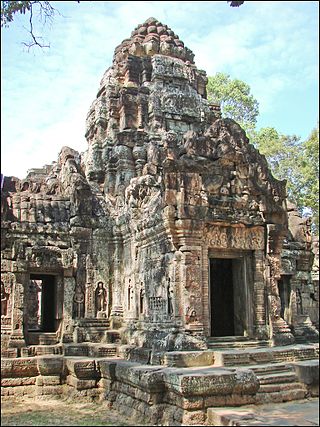
Ta Som is a small temple at Angkor, Cambodia, built at the end of the 12th century for King Jayavarman VII. It is located north east of Angkor Thom and just east of Neak Pean. The King dedicated the temple to his father Dharanindravarman II (Paramanishkalapada) who was King of the Khmer Empire from 1150 to 1160. The temple consists of a single shrine located on one level and surrounded by enclosure laterite walls. Like the nearby Preah Khan and Ta Prohm the temple was left largely unrestored, with numerous trees and other vegetation growing among the ruins. In 1998, the World Monuments Fund (WMF) added the temple to their restoration program and began work to stabilise the structure to make it safer for visitors.
6. Pre Rup
Pre Rup is a Hindu temple at Angkor, Cambodia, built as the state temple of Khmer king Rajendravarman and dedicated in 961 or early 962. It is a temple mountain of combined brick, laterite and sandstone construction.
7. Thommanon
Thommanon is one of a pair of Hindu temples built during the reign of Suryavarman II (1113–1150) at Angkor, Cambodia. This small and elegant temple is east of the Gate of Victory of Angkor Thom and north of Chau Say Tevoda. It is part of the UNESCO World Heritage Site, inscribed by UNESCO in 1992 titled Angkor. The temple is dedicated to Shiva and Vishnu.
8. Phimeanakas
Phimeanakas or Vimeanakas at Angkor, Cambodia, is a Hindu temple in the Khleang style, built at the end of the 10th century, during the reign of Rajendravarman, then completed by Suryavarman I in the shape of a three tier pyramid as a Hindu temple. On top of the pyramid there was a tower, while on the edge of top platform there are galleries. Phimeanakas is located inside the walled enclosure of the Royal Palace of Angkor Thom north of Baphuon.
9. West Baray
The West Baray or Baray Teuk Thla is a baray, or reservoir, at Angkor, Cambodia, oriented east–west and located just west of the walled city Angkor Thom. Rectangular in shape and measuring approximately 7.8 by 2.1 kilometers, the West Baray is the largest baray at Angkor and one of the largest handcut water reservoirs on Earth, possessing a current maximum capacity of 53 million m3 of water. Its waters are contained by tall earthen dikes measuring 11.9 meters in height. In the center of the baray is the West Mebon, a Hindu temple built on an artificial island.
10. Stegosaurus(?!)
.jpg)
The "dinosaur of Ta Prohm" is a bas-relief in the Khmer Empire temple-monastery of Ta Prohm. Numerous reliefs of various different animals are present in the temple; the "dinosaur" is one of its more ambiguous artworks. The relief first gained modern notoriety in the late 1990s when the lobe-like features running down the animal's back were compared to the back plates of stegosaurian dinosaurs. The relief has since become a popular piece of "evidence" for the fringe belief that non-avian dinosaurs once coexisted with humans.
11. Kravan Temple
Prasat Kravan is a small 10th-century temple consisting of five reddish brick towers on a common terrace, at Angkor, Cambodia, south of the artificial lake (baray) called Srah Srang. Its original Sanskrit name is unknown. The modern name in Khmer, "Prasat Kravan", means artabotrys odoratissimus temple. The temple was dedicated to Vishnu in 921 CE, according to an inscription on doorjambs.
12. East Mebon
The East Mebon is a 10th Century temple at Angkor, Cambodia. Built during the reign of King Rajendravarman, it stands on what was an artificial island at the center of the now dry East Baray reservoir.
13. Preah Palilay
Preah Palilay is a temple at Angkor, Cambodia. It is located in Angkor Thom, 400 m north-west of Phimeanakas. This small Buddhist sanctuary in the wooded area north of the Royal palace in Angkor Thom has a number of attractive features and is well worth the short detour.
14. Prasat Suor Prat
Prasat Suor Prat is a series of twelve towers spanning north to south lining the eastern side of a royal square in Angkor Thom, near the town of Siem Reap, Cambodia. The towers are made from rugged laterite and sandstone. They are right in front of Terrace of the Elephants and Terrace of the Leper King, flanking the start of the road leading east to the Victory Gate, on either side of which they are symmetrically arranged. Their function remains unknown.
15. Krol Ko
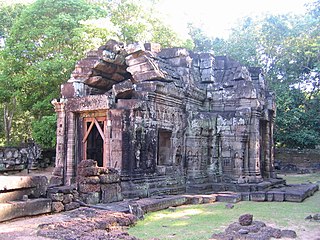
Krol Ko at Angkor, Cambodia, is a Buddhist temple built at the end of the 12th century under the rule of Jayavarman VII, in his Bayon architectural style. It is north of Neak Pean. The name 'Krol Ko' is a modern term meaning 'The Park of the Oxen' and likely has no connection to its historical use.
16. Angkor National Museum
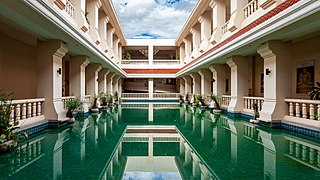
Angkor National Museum is an archaeological museum dedicated to the collection, preservation and presentation of Angkorian artifacts, also to provides information and education about art and culture of Khmer civilization, with collections mainly dated from Khmer Empire's Angkor period circa 9th to 14th-century. Most of the artifacts are discovered in and around the Angkor archaeological sites nearby. The museum is located in Siem Reap, Cambodia, on the way between downtown Siem Reap to northern road leading to Angkor ancient city.
17. Bat Chum
Bat Chum is a small temple built by Kavindrarimathana, a learned Buddhist minister of Khmer king Rajendravarman, at the middle of the 10th century. It is about 400 meters (1,300 ft) south of Srah Srang, at Angkor, Cambodia. A minister is in these cases a learned monk-advisor comparable with the Hindu purohita.
18. Angkor Green Gardens
Cambodian Cultural Village was a theme park and cultural museum in Siem Reap, Cambodia. It was located on road no. 6, three kilometres (1.9 mi) from the airport, six kilometres (3.7 mi) from the town and five kilometres (3.1 mi) from the famous Angkor Wat temple complex.
19. Ta Nei
Ta Nei is a late 12th century stone temple in Angkor, Cambodia. Built during the reign of King Jayavarman VII, it is near the northwest corner of the East Baray, a large holy reservoir. It was dedicated to the Buddha.
20. Prasat Chrung Northwest
Prasat Chrung are temples that located at each corner of the Angkor Thom, on the earth embankment that reaches almost to the top of the walls, is a small temple known as Prasat Chrung in modern Khmer. These four sandstone temples, in the style of Bayon, were Buddhist and dedicated to the Bodhisatta Lokesvara, as was the Bayon and the city. Cross-shaped in plan and facing to the east side. The sanctuary surrounded by a tower and originally steles with a poem praising the king were housed in small adjacent structures. Each stele has four different authors. Today these are housed in the Conservation office. Some of the originally Buddhist pediments were defaced in the late 13th century during the reign of king Jayavarman VIII and the figure of the Buddha was transformed into a linga.
Share
How likely are you to recommend us?
Disclaimer Please be aware of your surroundings and do not enter private property. We are not liable for any damages that occur during the tours.
